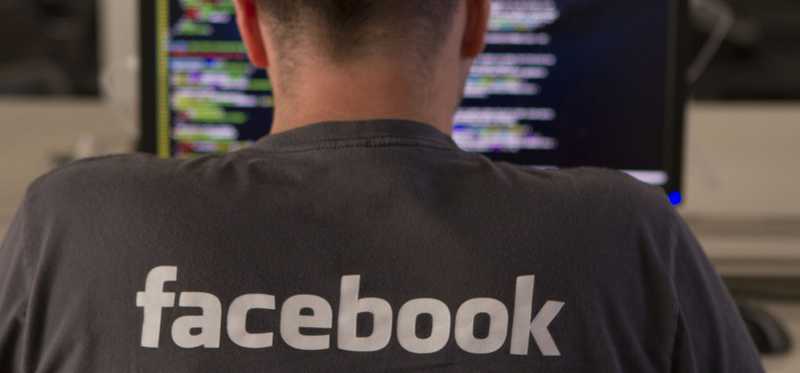10 Stock Market Sweethearts Any Investor Could Love

10 Stock Market Sweethearts Any Investor Could Love
Loving you is easy because you’re so profitable…
Although Valentine’s Day is still two days away, love is in the air. It’s not the type of love you’re probably thinking of, though. Rather, I’m talking about an investors’ devotion to his or her investments. You know, those stocks you could spend the rest of your life with.
What makes a company worth calling your very own, till death do you part? Well, to begin with, you’d like to see clearly defined competitive advantages, if not an economic moat, within the industry in which a company operates. Businesses that are a go-to within their respective fields tend to have staying power and are often very profitable.
Secondly, profits from a time-tested business model are a must. Profits are the first building block to receiving a dividend, and a dividend is your ticket to rapid wealth creation. Being able to reinvest your payout back into more shares of dividend-paying stock leads to a compounding pattern of more shares of stock owned and, therefore, a bigger dividend payout. Not to mention, dividend-paying stocks, which we’d expect to be steadily profitable, tend to outperform non-dividend-paying stocks quite substantially over the long run.
Third and finally, having a brand name can do wonders. Companies that are well-recognized by the public or business community typically have no trouble engaging with their customer base and developing a loyal following.
With this in mind, here are 10 stock market sweethearts all investors can hold near and dear to their hearts.
Previous
Next

I’m Sirius for you
One company that’s easy to fall head-over-heels in love with is Sirius XM Holdings (NASDAQ: SIRI), which is now a far cry from the debt-riddled mess it was a decade ago.
Satellite radio operator Sirius XM is one of a very small handful of legal monopolies in the United States. This status gives it quite the moat relative to terrestrial and online radio competitors. For example, the primary revenue source for terrestrial radio and most online providers is advertising. While a successful model when the economy is thriving, ad-based models struggle mightily when inevitable recessions hit. With Sirius XM, you get a company that relied on ads for just 3.3% of its total revenue in 2018. The bulk of its sales come from consumer subscriptions, which are far less likely than advertisers to cancel when the economy turns south.
Sirius XM’s business model is also beautiful because its satellite costs are relatively fixed. Sure, revenue-sharing, royalties, and talent acquisition costs can vary from quarter to quarter, but no matter how many subscribers Sirius XM attracts, its transmission costs remain relatively stable. That’s a recipe for long-term margin expansion.
Previous
Next

Our love is Intuitive
No medical-device company screams “be mine” more than Intuitive Surgical (NASDAQ: ISRG). This developer of the da Vinci robotic surgical system has been in hospitals now for nearly two decades, and it currently has close to 5,000 systems installed worldwide, with more than 3,000 in the United States. The beauty of Intuitive Surgical is that it just keeps getting better as its installed base grows. Whereas its surgical systems cost a pretty penny (usually between $500,000 and $2.5 million), they’re also costly to build, leading to rather so-so operating margins. Comparatively, the instruments that are purchased with each procedure, as well as the regular servicing required, are very high-margin line items for the company. As the installed base grows, the percentage of revenue deriving from instrumentation and services continues to tick higher, leading to happier investors.
Not to mention, Intuitive Surgical should benefit from an aging population that’ll need maintenance, preventative, and emergency care. Already a leader in the urology and gynecology settings, the company is beginning to find its footing in thoracic, colorectal, and other general soft-tissue surgeries. Though you’ll get no dividend here, the double-digit growth rate more than makes up for it.
Previous
Next

On cloud nine
If you like competitive advantages, then you’re going to love Shopify (NYSE: SHOP), an e-commerce platform provider for small-and-medium-sized businesses that’s taken Wall Street by storm. Why e-commerce? Well, in case you haven’t noticed, it’s the retail trend of the future. Although the bulk of U.S. retail sales still occur offline, the percentage of total consumption conducted on the internet is growing at a steady pace. In 2013, 5.8% of all U.S. retail revenue was derived online. But by 2021, an estimated 13.7% of all sales will be generated from an e-commerce platform. That’s a rapidly growing opportunity for Shopify, and the company knows it, which is why it’s been reinvesting most of its operating cash flow back into the business. Don’t overlook the international market, either.
Beyond traditional retail, Shopify has also been making its presence known in the legal cannabis industry. Shopify’s platform has been the point-of-sale choice of the Ontario Liquor Control Board (which oversees legal marijuana in the province) and multiple private growers. Since this has predominantly been a cash business, Shopify offers cannabis growers and retailers a never-before-seen look at consumer buying habits that they can use to tweak production and pricing. Long story short, this company is at the center of numerous rapidly growing trends.
Previous
Next

Bank on this
Although big banks aren’t exactly consumers’ favorite companies, getting cozy with Bank of America (NYSE: BAC) is probably a good idea.
Bank of America today is nothing like the disaster it was during the financial crisis from a decade ago. It’s arguably more transparent, considerably better equipped from an equity perspective to handle a serious downturn in the economy, and it’s geared to thrive in higher interest environments. Among the big U.S. money center banks, Bank of America has the highest sensitivity to interest rate increases, which has led to billions of dollars in added net interest income over time. Since December 2015, the Federal Reserve has moved the federal funds target rate higher by 225 basis points, pushing Bank of America’s profits higher.
At the same time as profits are expanding, costs are declining. The company has closed less-profitable branches and pushed digital solutions to get in touch with millennials and its future generation of customers. Since 2010, noninterest expenses have been slashed by 36% to $53.4 billion. And, as the icing on the cake, Bank of America’s forward price-to-earnings ratio (even after a quintupling in its share price since 2011) is at a decade low. You can bank on this stock over the long term.
Previous
Next

My Prime focus
Seriously, what is there to not love about Amazon.com (NASDAQ: AMZN)? When it comes to sheer dominance in retail, Amazon takes the cake.
Just how big is Amazon’s slice of the retail pie? According to research provided by eMarketer as of mid-2018, Amazon was responsible for 5% of all retail sales in the U.S. and -- get this -- 49.1% of all e-commerce sales. Laughably, eBay (NASDAQ: EBAY) and Apple (NASDAQ: AAPL) are Nos. 2 and 3 in e-commerce sales with only 6.6% and 3.9% of e-commerce sales, respectively. That’s not a moat; that’s a canyon protected by fire-breathing dragons surrounding Amazon’s proverbial retail castle. And to boot, Amazon manages to keep its customers loyal through Prime memberships, giving them access to cheaper, faster shipping, as well as streaming content.
It’s not just retail or Prime that make Amazon special. Amazon Web Services (AWS), the company’s cloud business catered to small- and medium-sized businesses, is a juggernaut. Although AWS accounted for only $25.7 billion of the company’s $232.9 million in 2018 sales, it contributed $7.3 billion of its $12.4 billion in operating income. It could easily grow by a big double-digit percentage for years to come, and AWS is the company’s greatest profit driver.
Previous
Next

There's electricity between us
Sometimes boring businesses can be beautiful. While electric utilities don’t normally inspire feelings of amore, NextEra Energy (NYSE: NEE) will have investors changing their tunes about utility companies.
NextEra’s uniqueness derives from it being the electric utility that’s most reliant on renewable energy. No utility produces more power from wind or solar than NextEra Energy, and the company plans to keep it that way. It’s investing $40 billion in renewable infrastructure projects through 2020, which the company expects will drive mid- to high-single-digit growth. Renewables aren’t a cheap investment, but they pay over the long run with substantially lower per-kilowatt-hour costs than coal, nuclear, or oil- and gas-fired electricity generation units. By 2020, NextEra anticipates producing between 10,100 megawatts and 16,500 megawatts from wind generation alone, which’ll power between 6.6 million and 10.7 million homes.
As for solar, the company unveiled its 30-by-30 project, which involves installing more than 30 million solar panels by the year 2030 to create an additional 10,000 megawatts of production. If renewable energy projects continue to gain steam over the long run, NextEra will be many steps ahead of its competition. And yes, like most utilities, it pays a hearty dividend, too.
Previous
Next

A heart for this social media star
Social-media companies have come and gone, but there’s nothing quite like Facebook (NASDAQ: FB). Sure, it may have data privacy issues from time to time, but that’s to be expected of a company that finished 2018 with 1.52 billion daily active users and 2.32 billion monthly active users. Even with these privacy challenges, there’s simply nowhere else advertisers can go to get access to up to 2.3 billion potential customers.
Even if you don't think Facebook itself has longevity, you’re overlooking the company’s portfolio of prime social-media assets. Facebook, Facebook Messenger, WhatsApp, and Instagram, which are all owned by Facebook, represent four of the top seven most-visited media sites, based on monthly views.
Think about this for a moment: Facebook has done well with advertising on its namesake platform, but it’s just barely touched the tip of the iceberg in terms of what it can do to monetize WhatsApp, Messenger, and even Instagram. Facebook’s payment platform brought in more than $800 million in 2018, and this is just a taste of what Mark Zuckerberg’s brainchild could offer in the future.
Previous
Next

Be mine
Another stock sweetheart you’ll be itching to make your own is royalty-based mining company Wheaton Precious Metals (NYSE: WPM).
Although precious metals aren’t typically the fastest-growing industry, Wheaton does things a bit differently than your average mining company. Rather than investing heavily in mine development and expansion, maintenance, and labor, Wheaton Precious Metals instead provides upfront capital that allows gold, silver, and palladium mining companies to develop new mines or expand existing ones. In return, Wheaton receives a percentage of production for a long period of time (occasionally the life of the mine) at a substantially below-market cost. In the third quarter, the company announced cash costs per ounce of just $5.04 for silver, $418 for gold, and $169 for palladium. In terms of cash operating margin per ounce, this worked out to $9.76 for silver, $792 for gold, and $796 for palladium.
Aside from being well insulated in the event of a drop in precious-metal prices, Wheaton Precious Metals also benefits from its deal diversity. It currently has just shy of two dozen royalty streams in its portfolio, meaning issues at one or two mines won’t sink the ship. Over the long term, this could be one lustrous stock to own.
Previous
Next

This one can go the long distance
Sure, the AT&T (NYSE: T) of today may not represent the growth powerhouse that your parents or grandparents remember, but “Ma Bell,” as the company was known in the 1980s prior to its breakup, is delivering income and safety like no other company.
At the tail end of January 2019, AT&T wound up reporting its 2018 operating results, which included recently acquired Time Warner and its prized networking assets, CNN, TBS, and TNT. Thanks to this purchase, AT&T recorded a 15% increase in cash from operations at $43.6 billion, and it has forecast that, even with hefty capital expenditures tied to its 5G network rollout, it’ll generate approximately $26 billion in free cash flow in 2019. Each and every year, AT&T is a cash-generating powerhouse, and it’s what supports the company’s nearly 7% dividend yield. And, by the way, it would take less than 11 years to double your initial investment in AT&T based solely on dividend payouts.
AT&T also has a few growth tricks up its sleeve. The 5G network rollout should lead to a tech upgrade cycle that involves even greater data consumption. Data is AT&T’s bread and butter since it generates high margins. Additionally, adding CNN, TBS, and TNT should help the company when negotiating with advertisers, leading to increased ad profitability. Needless to say, this one can go the long distance.
Previous
Next

You get me charged
An easy way to charge up your devotion to your stocks is to consider buying payment-processing giant Visa (NYSE: V).
To proclaim Visa as a dominant player in the U.S. would be something of an understatement. Back in 2006, it held 42.5% of all U.S. network purchase volume market share, but by 2016, it had expanded its share lead to 50.6%, nearly 28 percentage points higher than the next-closest competitor. Not only is Visa the go-to processor for U.S. merchants, but it’s also not exposed to lending risk. Although some payment processors choose to also lend money, Visa’s choice not to ensures it has no delinquency risk when U.S. or global economic growth slows.
Don’t overlook the abundant runway Visa has to grow its business, either. Industry pundits have claimed that 85% of all global transactions are still conducted in cash. That leaves plenty of opportunity in underbanked regions of Southeast Asia, the Middle East, and Africa for Visa to make an imprint as a payment facilitator. Visa could very well grow its payment volumes by a high-single-digit or double-digit percentage for a decade -- or longer.
Previous
Next

The secret sauce to loving your stocks
As you can see, there are no shortage of sectors or industries that can make you money. The real key to success is remaining devoted to your top holdings over long periods of time.
Why? The simple answer is that the data doesn’t lie. An analysis from JPMorgan Asset Management found that between Jan. 3, 1995, and Dec. 31, 2014, an investor who’d held onto the S&P 500 tracking index for all 20 years would have gained 555%, or 9.9% per year. Mind you, this gain includes the two biggest swoons (the dot-com bubble and Great Recession) the stock market had seen since the 1930s. Comparatively, an investor who’d tried to time the market and missed only the 10 best trading days over this 20-year period would have seen their aggregate gain fall from 555% to 191%.
What’s more, the report found that more than half of these top-performing days occurred within two weeks of the worst-performing days. If you dive out when the going gets rough, you’re going to miss out on these sizable gains.
In other words, the secret sauce to loving your stocks and having them, in turn, love you back by generating substantial profits, is simply time.
John Mackey, CEO of Whole Foods Market, an Amazon subsidiary, is a member of The Motley Fool’s board of directors. Sean Williams owns shares of AT&T and Bank of America. The Motley Fool owns shares of and recommends Amazon, Apple, Facebook, Intuitive Surgical, and Shopify. The Motley Fool owns shares of Sirius XM Radio and Visa and has the following options: long January 2020 $150 calls on Apple and short January 2020 $155 calls on Apple. The Motley Fool recommends eBay and NextEra Energy. The Motley Fool has a disclosure policy.
Previous
Next
Invest Smarter with The Motley Fool
Join Over Half a Million Premium Members Receiving…
- New Stock Picks Each Month
- Detailed Analysis of Companies
- Model Portfolios
- Live Streaming During Market Hours
- And Much More
READ MORE
HOW THE MOTLEY FOOL CAN HELP YOU
-
Premium Investing Guidance
Market beating stocks from our award-winning service
-
The Daily Upside Newsletter
Investment news and high-quality insights delivered straight to your inbox
-
Get Started Investing
You can do it. Successful investing in just a few steps
-
Win at Retirement
Secrets and strategies for the post-work life you want.
-
Find a Broker
Find the right brokerage account for you.
-
Listen to our Podcasts
Hear our experts take on stocks, the market, and how to invest.
Premium Investing Services
Invest better with The Motley Fool. Get stock recommendations, portfolio guidance, and more from The Motley Fool's premium services.